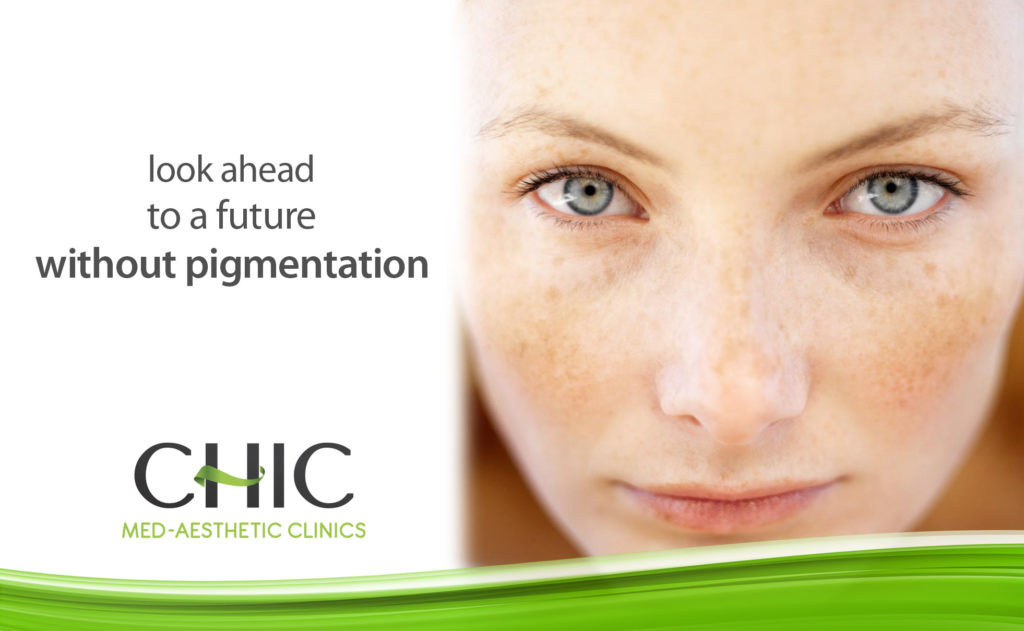Skin Pigmentation
Visibly Clearer Skin
At CHIC Med-Aesthetic Clinics, our doctors will carefully assess your pigmentation concerns and formulate a personalized treatment plan for you. We offer a wide range of treatment options, including lasers (such as PicoWay and Alexandrite), chemical peels, and skin needling, among others. This ensures that you receive the treatment most suited for your type of pigmentation.
Our PicoWay laser technology is highly effective in treating melasma. Other pigmentation concerns include sun spots, age spots, freckles and other benign pigmented lesions — often achieving results in 1-3 treatments.
The first step is simply contacting us for your initial consultation, where we will discuss with you what is a realistic and achievable outcome and what to expect from your treatment.
What is skin pigmentation?
Melanin which is the pigment which gives skin its colour, is produced by cells in the skin called melanocytes. There are typically between 1000 and 2000 melanocytes per square millimetre of skin. Skin colour difference between fair and dark people is not due to the number of melanocytes in their skin, but due to the melanocytes’ activity. Excessive skin pigmentation is a result of abnormal production and deposition of melanin by the melanocytes. This leads to the appearance of brown or darker spots of pigmentation in the skin.
Reasons for skin pigmentation problems are:
UV radiation
In most cases, especially in areas of high UV radiation levels like Malta, skin pigmentation problems can be caused by excessive UV or sun exposure (most common).
Hormonal
As seen in melasma or chloasma that is a type of pigmentation usually caused by pregnancy or the contraceptive pill (common).
Trauma to the skin
This can be a result of physical trauma to the skin, or acne. This is known as post-inflammatory hyperpigmentation (common).
Birthmarks & acquired pigmentation
Skin pigmentation can be present at birth (birthmarks), appear in childhood, or adulthood. Examples of these include; congenital melanocytic naevus, cafe au lait spots, and freckles.
How can skin pigmentation be treated?
The first step in treating skin pigmentation is accurately identifying the type of pigmentation present. Each type of pigmentation—whether caused by sun damage, hormonal changes, inflammation, or other factors—requires a specific treatment approach for the best results.
At CHIC Med-Aesthetic Clinics, we offer a range of advanced treatment modalities tailored to target different pigmentation concerns. From cutting-edge laser technology to microneedling and chemical peels, our expert team provides personalized solutions to restore an even, radiant complexion.
Your journey starts with a consultation. Our experienced doctors will examine your pigmentation, assess your skin type, and recommend the most effective treatment plan to achieve long-lasting results.
How can skin pigmentation be treated with other methods?
The first method of treating skin pigmentation, is to prevent its appearance or worsening by daily application of sunscreen. Topical lightening agents can be used in conjunction to help reduce skin pigmentation. These work by inhibiting enzymes that produce melanin and by increasing the turnover of the skin to flush out exisiting pigmentation. At CHIC we offer a range of chemical peels and creams, along with skin needling to treat pigmentation.





